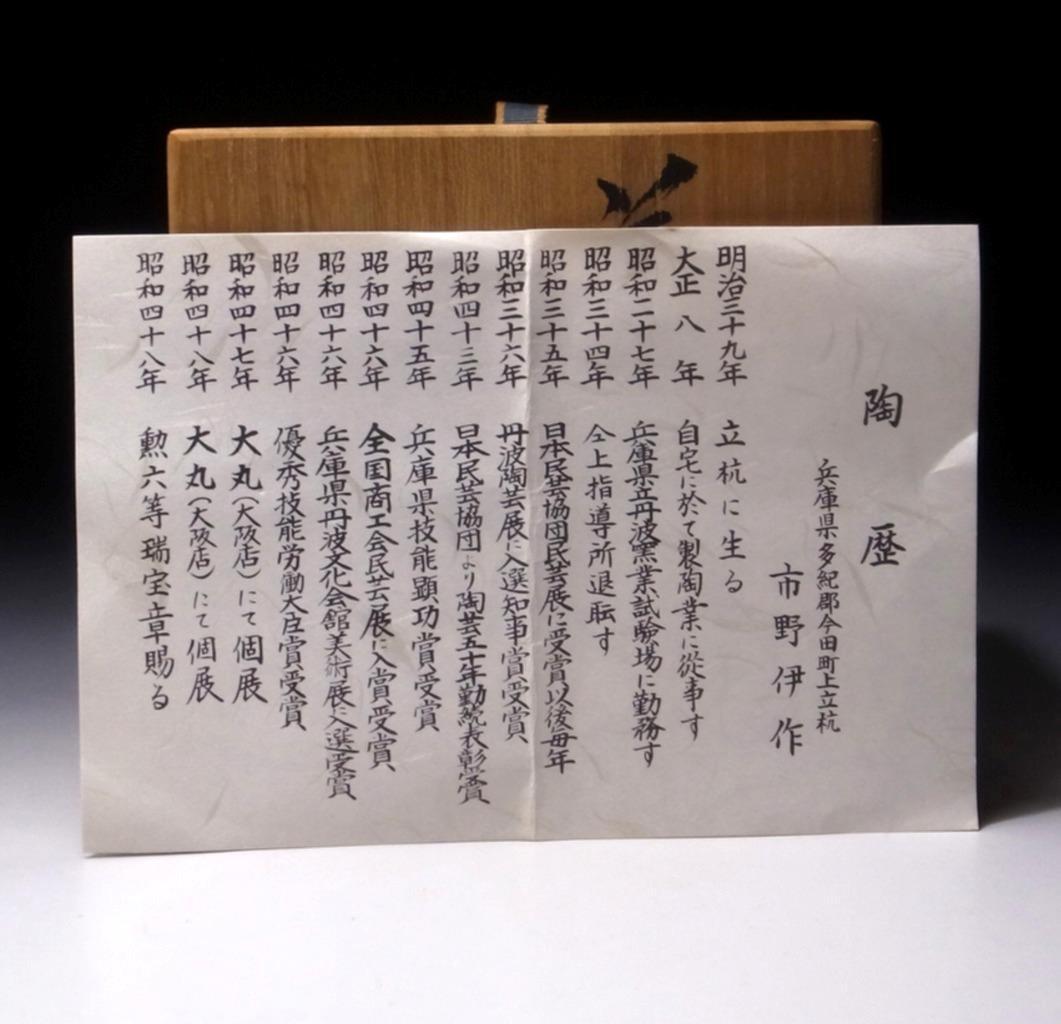





Potter: Isaku Ichino
Approximate size: W5.1″ by H3.0″ or 13.0 by 7.5 cm
This is a fine Tamba chawan or ceremonial tea bowl made by the famous potter Isaku Ichino (1906-). Tamba ware is pottery of Japan’s current Hyogo prefecture. Tamba ware honours the ancient techniques of firing pottery in an anagama kiln, as this magnificent glaze attests. The firings may take anywhere from 48 hours to 12 or even more days. The kiln generally takes the same amount of time to cool down as rapid cooling would cause much breakage. Records of historic firings in large kilns shared by several village potters describe several weeks of steady stoking the fire.
Tamba yaki has been produced in the village of Tachikui, Hyogo prefecture for over 800 years. Although counted as one of the ancient six potteries in Japan with Seto, Tokoname, Shigaraki, Bizen and Echizen, Tamba has certain characteristics which set it apart from its peers.
A comparison of pieces from the Momoyama period (late 16th century), shows Tamba yaki to have a lighter, more refined feel, attributed in part to the fact that the natural glaze has a greenish tinge. These pieces, then fired in “anagama” (cave kilns), are now referred to as ko-Tamba or old-Tamba. It is thought the discovery of the green glass like glaze during the Momoyama period to have been a sort of happy accident. Tamba yaki was fired in anagama, cave kilns and these ovens left certain deposits in the glass. While this may have been thought of as a byproduct of the firing process at the time, these types of effects made Tamba yaki quickly gain popularity and become renowned throughout Japan.

Anagama or cave kilns have unique characteristics that translate to how pottery is influenced inside the kiln and how it looks once it is removed after a firing. Its origin is very old and it is thought to have been brought to Japan from China via Korea somewhere during the 5th century. It is a variation of the climbing dragon kiln of southern China, whose further development was also adopted by the Japanese. For example the breaking up of the firing space into a series of chambers in the noborigama kiln.
Various developments over time also contributed to Tamba yaki’s uniqueness. Late in the Momoyama period a new method of firing was introduced, using a kiln built on a slope (“nobori-gama”). In the early Edo period, the area produced a diverse array of pottery, ranging from pepper pots for the feudal lords to tea ceremony ware under the guidance of Enshu Kobori. During the latter part of the Edo period the local clay was refined and new techniques were introduced, resulting in the creation of finer, more sophisticated pieces. It was during this time that deep-red glazed ware known as “akadobe-yu” and pieces made of white clay (“shiro Tamba”), came into being. Despite the high quality of its ware, Tamba was at this time still essentially a regional kiln, producing mainly for local use.
The chawan bears the potter’s signature next to the koudai or foot-ring. There are no chips or cracks and condition is mint. Comes with the original high quality shiho-san paulownia tomobako or storage box with calligraphy on the lid and a pamphlet about the potter.
€200 + shipping cost





The emergence of the Japan Arts and Crafts movement in the early 20th century enhanced the popularity of these rustically appealing pieces and helped Tamba yaki to achieve the nationwide recognition it enjoys today. The appeal of Tamba yaki lies in the beauty of its natural glaze which reflects the surroundings in which it is made, and the refinement of form, born through years of experience and experimentation. The use of various names to describe this simple, yet tasteful pottery may cause some confusion, being alternatively referred to as Tamba, Tamba or Tamba-Tachikui yaki.
